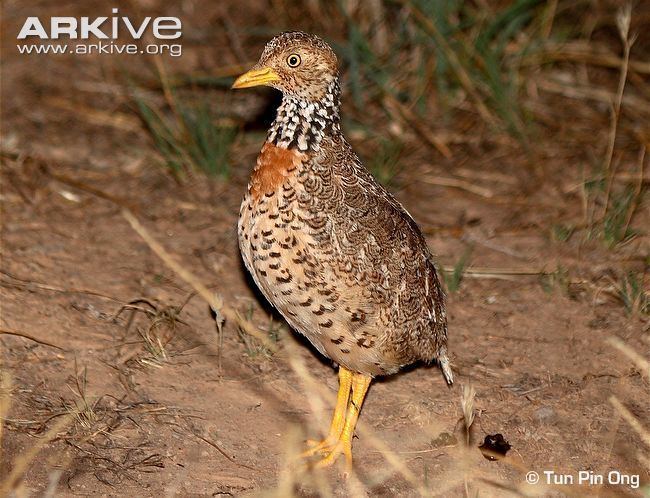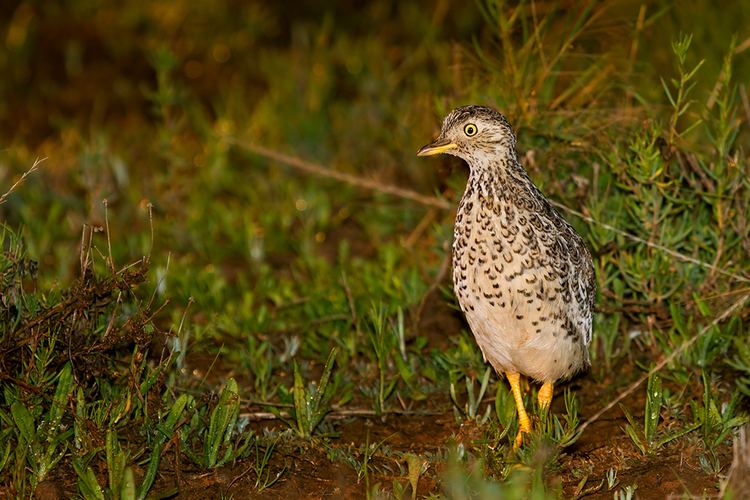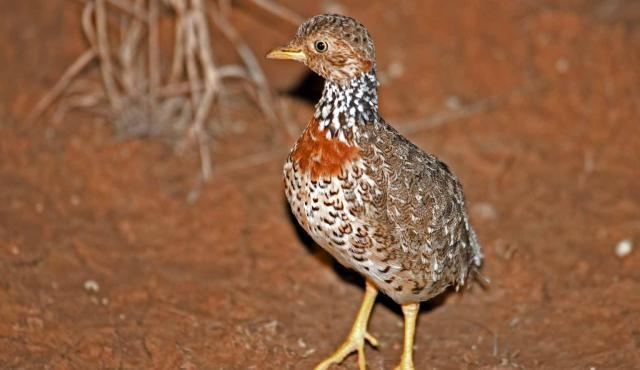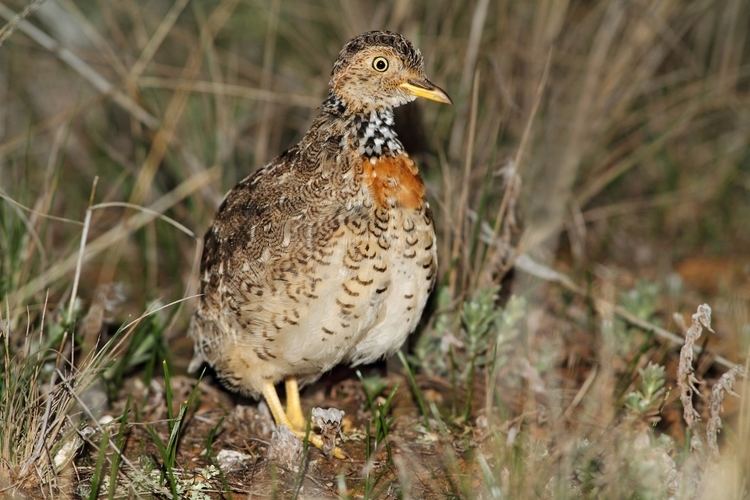Scientific name Pedionomus torquatus Higher classification Pedionomus Order Shorebirds | Genus PedionomusGould, 1841 Phylum Chordata Rank Species | |
 | ||
Family PedionomidaeBonaparte, 1856 Similar Zappey's flycatcher, Japanese leaf warbler, Black‑winged flycatcher‑shrike, Chestnut‑rumped babbler, Yellow‑breasted flowerpecker | ||
Plains wanderer calling hay plain new south wales 26 july 2010
The plains-wanderer (Pedionomus torquatus) is a bird, the only representative of family Pedionomidae and genus Pedionomus. It is endemic to Australia. The majority of the remaining population is found in the Riverina region of New South Wales.
Contents
- Plains wanderer calling hay plain new south wales 26 july 2010
- Plains wanderer
- Description
- Taxonomy
- Status and conservation
- International
- Australia
- References
Plains wanderer
Description

The plains-wanderer is a quail-like ground bird, measuring 15–19 cm. It is such an atypical bird that it is placed in an entire family of its own, Pedionomidae. The adult male is light brown above, with fawn-white underparts with black crescents. The adult female is substantially larger than the males, and has a distinctive white-spotted black collar. They are excellent camouflagers, and will first hide at any disturbance. If they're approached too close, they will run as opposed to flying, which they are very poor at. Females lay four eggs, which the male then incubates.
Taxonomy

It was formerly believed to be related to the buttonquails and thus placed in the gamebird order Galliformes or with the cranes and rails in Gruiformes. DNA-DNA hybridization and RAG-1 sequence data places it as a wader related to the jacanas (Sibley & Ahlquist 1990, Paton et al. 2003, Thomas et al. 2004, van Tuinen et al. 2004). It thus represents a remarkable case of morphological convergence, or perhaps it is simply extremely plesiomorphic in morphology (the buttonquails, meanwhile, having turned out to be a very basal offshoot of the wader radiation). In the latter case, this would mean that the jacanas, painted snipe and seedsnipes – all ecologically very different birds – all evolved from birds very similar to the living plains-wanderer.
Status and conservation

Population decline has been caused by the conversion of native grasslands to cultivation and intensive predation by the introduced fox — the species' ground-nesting habits, poor flying ability, and tendency to run rather than fly from predators make it easy prey for the introduced fox. Sites identified by BirdLife International as being important for plains-wanderer conservation are Boolcoomatta, Bindarrah and Kalkaroo Stations in north-eastern South Australia, Diamantina and Astrebla Grasslands in western Queensland, Patho Plains in northern Victoria and the Riverina Plains in New South Wales.
International
This bird is listed as an endangered species on the 2007 IUCN Red List.
Australia
Plains-wanderers are listed as vulnerable on the Australian Environment Protection and Biodiversity Conservation Act 1999 (EPBC). Their conservation status also varies from state to state within Australia. For example:
The plains-wanderer is likely to change status to nationally endangered under the EPBC Act 1999.
